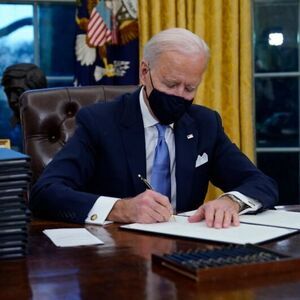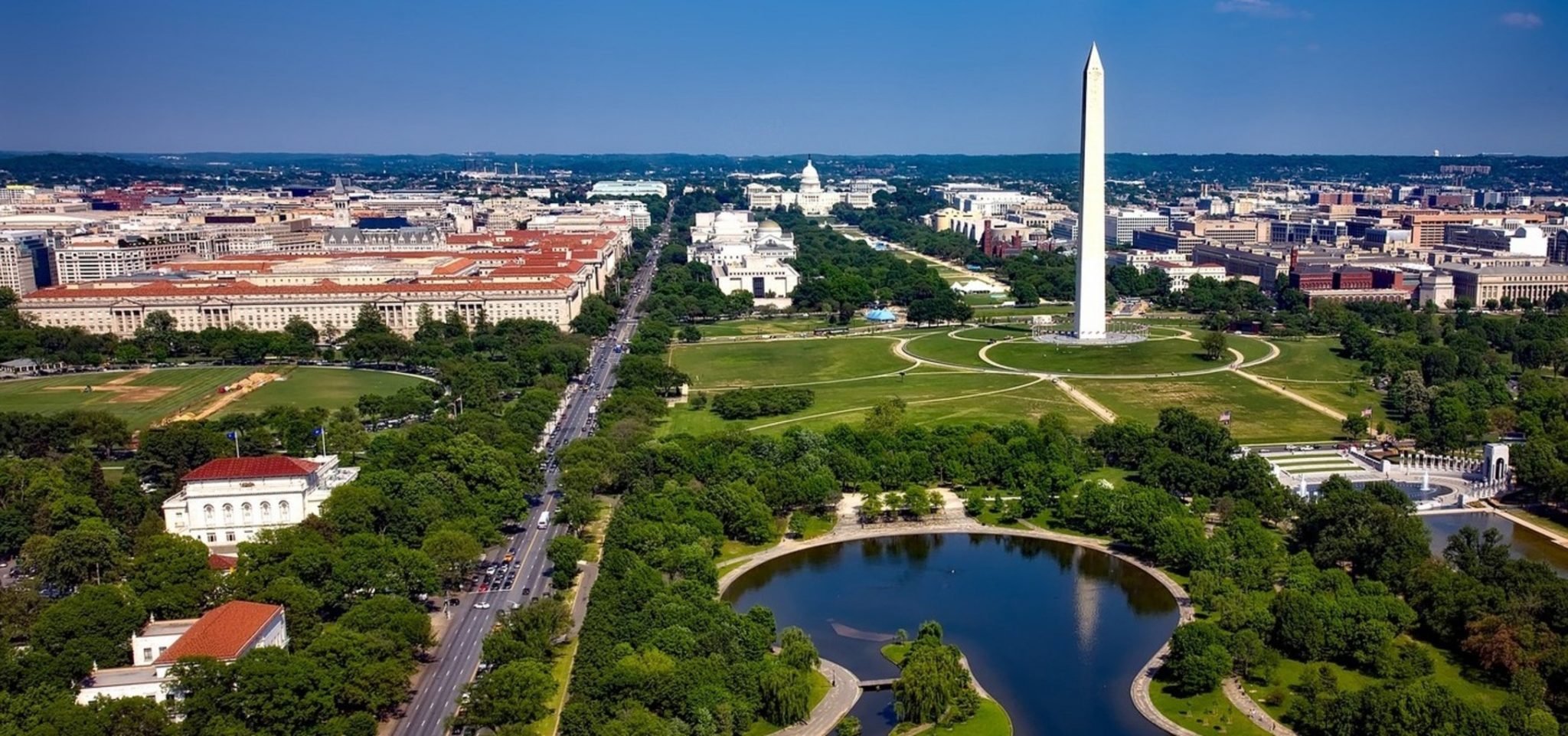
President Joe Biden
On his 51st day in Office, President Joe Biden began his work with the budget by signing the American Rescue Plan into law. This $1.9 trillion stimulus package serves as the first step of Biden’s extensive economic plan. See a breakdown of H.R.1319.
The remainder of Biden’s plan is dependent on the decisions made by the Appropriations Committees in both the House and the Senate during what has been dubbed “appropriations season.” During that time, members of the committees and their staff will determine how the federal budget for fiscal year 2022 will be distributed. These determinations will be made based on the desires and plans laid out by the Biden administration, as well as those of outspoken members of Congress.
Taxes
The Biden administration has shared a goal of raising the annual tax revenue by $4 trillion, all the while not increasing taxes for households with a gross income of less than $400,000 annually, by way of raising the tax rate for the top tax bracket to 39.6% from 37%, and increasing the corporate tax rate to 28% from 21%. They also plan to impose a 15% minimum tax on the income of large companies – a company with a net annual income of at least $100 million is classified as a large company, and to tax profits accrued from foreign subsidiaries at a rate of 21%. Lower tax brackets as well as capital gains taxes will remain at their current rate.
Key Committees
- Committee on Ways and Means
- Chair Richard Neal (D-MA, 1st)
- Kara Getz, Counsel to the Chairman
- Ranking Member Kevin Brady (R-TX,8th)
- Payson Peabody, Tax Counsel
- Chair Richard Neal (D-MA, 1st)
- Committee on Financial Services
- Chair Maxine Waters (D-CA, 43rd)
- Katanya Moore, Director of Investor Protection and Capital Markets Policy
- Ranking Member Patrick McHenry (R-NC, 10th)
- Lindsey Shackelford, Director of Operations
- Chair Maxine Waters (D-CA, 43rd)
- Committee on Finance
- Chair Ron Wyden (D-OR)
- Sarah Schaefer, Senior Tax Policy Advisor
- Ranking Member Mike Crapo (R-ID)
- Andre Barnett, Senior Tax Counsel
- Chair Ron Wyden (D-OR)
- Committee on Banking, Housing, and Urban Affairs
- Chair Sherrod Brown (D-OH)
- Elisha Tuku, Chief Counsel
- Ranking Member Pat Toomey (R-PA)
- Ken Acuña, Professional Staff Member
- Chair Sherrod Brown (D-OH)
Healthcare
With the increase in federal funding provided by the changes in tax policy, the Biden administration aims to lower the rate of uninsured Americans to 3% over the course of the next 10 years. As of 2019, 8% of Americans were fully without health insurance, so there would be a targeted decrease of 0.5% per year of uninsured American citizens. The aim is to achieve this goal through the protection and expansion of the Affordable Care Act originally enacted during the Obama administration.
“Bidencare,” the nickname given to Biden’s healthcare plan, outlines many changes to current healthcare legislation. The new plan would bring back the individual mandate which will penalize individuals for not having health insurance, and lower the portion of their income consumers are allowed to spend on insurance to 8.5% from 10% of their income, in an effort to expand access to insurance on the individual marketplace. The plan would also attempt to lower skyrocketing drug prices by implementing legislation that would limit price increases “for all brand, biotech and abusively priced generic drugs,” and repealing current Medicare laws that ban the negotiation of lower prices from drug manufacturers. The purchase of prescription drugs from other countries would also be permissible under this plan, as a means of increasing competition.
Key Committees
- Committee on Energy and Commerce
- Chair Frank Pallone Jr. (D-NJ, 6th)
- Richard Van Buren, Health Counsel
- Ranking Member Cathy McMorris Rodgers (R-WA, 5th)
- Caleb Graff, Deputy Chief Counsel
- Chair Frank Pallone Jr. (D-NJ, 6th)
- Committee on Finance
- Chair Ron Wyden (D-OR)
- Sarah Schaefer, Senior Tax Policy Advisor
- Ranking Member Mike Crapo (R-ID)
- Brett Baker, Deputy Health Policy Director
- Chair Ron Wyden (D-OR)
- Committee on Health, Education, Labor, and Pensions
- Chair Patty Murray (D-WA)
- Nick Bath Jr., Health Policy Director
- Ranking Member Richard Burr (R-NC)
- Amy Marie Pellegrino, Health Policy Director
- Chair Patty Murray (D-WA)
Student Debt
By repealing the high-income business losses tax cut enacted in the CARES Act, the Biden administration aims to fund the forgiveness of all tuition-related federal student debt for undergraduate students earning up to $125,000. Other proposals discussed by the administration include the immediate cancellation of a minimum of $10,000 of debt per student; the forgiving of all remaining loans after a term of 20 years, with no tax burden; and legislation to make public colleges and universities free for all families with a net annual income below $125,000.
Students would be eligible for additional forgiveness of up to $50,000 for performing public service. Each year of eligible service performed would automatically cancel $10,000 of debt. This would not replace the current Public Service Loan Forgiveness program but would rework the program by qualifying additional federal loans and forgiving half of the remaining balance after five years.
The proposals laid out by the administration would not affect students with private loans, only federal loans would be affected. These proposals will also only apply to undergraduate student loans.
Key Committees
- Committee on Education and Labor
- Chair Bobby Scott (D-VA, 3rd)
- Rashage Green, Director of Education Policy/Counsel
- Ranking Member Virginia Fox (R-NC, 5th)
- Alex Ricci, Professional Staff Member
- Chair Bobby Scott (D-VA, 3rd)
- Committee on Health, Education, Labor, and Pensions
- Chair Patty Murray (D-WA)
- Kara Ann Marchione, Education Policy Director
- Ranking Member Richard Burr (R-NC)
- Andrew LaCasse, Senior Education Policy Advisor
- Chair Patty Murray (D-WA)
Minimum Wage
The Biden administration aims to pass legislation to raise the federal minimum wage to $15 per hour, and empower workers to bargain for higher wages by eliminating rules in contracts that prohibit discussion between employees regarding pay rate. There is also talk of passing legislation to prevent companies from labeling low-wage workers as managers as a means of avoiding overtime pay.
There are 29 states (and Washington, D.C.) that have established a minimum wage that exceeds the current federal minimum of $7.25 per hour. The legislation would help address changes to cost of living and inflation, to create what is called a “livable wage.” A livable wage is the approximate income needed to meet a household’s basic needs. According to a study performed by MIT, the living wage in the U.S. in 2019 was $16.54 per hour, or $68,808 before taxes for a family of four (two working adults and two children), an increase from $16.14 in 2018. At the current minimum wage, it would take four full-time (75 hours per week, per person) jobs to provide a livable wage for the aforementioned family structure.
Key Committees
- Committee on Education and Labor
- Chair Bobby Scott (D-VA, 3rd)
- Kyle DeCant, Labor Policy Counsel
- Ranking Member Virginia Fox (R-NC, 5th)
- Ben Ridder, Professional Staff Member
- Chair Bobby Scott (D-VA, 3rd)
- Committee on Health, Education, Labor, and Pensions
- Chair Patty Murray (D-WA)
- Lafe Solomon, Labor Counsel
- Ranking Member Richard Burr (R-NC)
- Will Campbell, Labor Research Assistant
- Chair Patty Murray (D-WA)
Infrastructure
The Biden administration’s Build Back Better plan, calls on Congress to pass comprehensive infrastructure reform legislation – a push that will be led by newly appointed Secretary of Transportation, Pete Buttigieg. An infrastructure overhaul of this scale has been compared to the Eisenhower administration’s establishment of the highway system. The overall plan would include a total of $3 trillion to $4 trillion in infrastructure spending, and would be divided into two phases: the first focusing on physical infrastructure and the second focusing on “human infrastructure.”
The aim is to spend $1.3 trillion on physical infrastructure over the course of 10 years, $20 billion of which would be spent in the first year of the administration on rural broadband infrastructure, and an additional $50 billion on road, highway, bridge repair, and improvements to the electric grid. Spending on these improvements would total up to $1 trillion over the next 10 years.
Key Committees
- Committee on Transportation and Infrastructure
- Chair Peter DeFazio (D-OR, 4th)
- Jill Harrelson, Budget Director/Deputy Counsel
- Ranking Member Sam Graves (R-MO, 6th)
- Corey Cooke, General Counsel
- Chair Peter DeFazio (D-OR, 4th)
- Committee on Environment and Public Works
- Chair Tom Carper (D-DE)
- Kenneth Martin, Senior Policy Advisor for Infrastructure
- Ranking Member Shelley Moore Capito (R-WV)
- Murphie Barrett, Senior Policy Advisor
- Chair Tom Carper (D-DE)
Climate Change
Included in the proposed infrastructure plan is $400 billion to be spent over the course of 10 years, including $60 billion for eco-friendly transit and $46 billion for climate research. The plan would also fund the development of a new federal agency to conduct research on clean energy, that would be a division in the Department of Justice focused on climate and environmental justice. Another $5 billion over the course of five years would be spent on improving electric car battery technology and building electric vehicle charging stations across the country.
The Biden administration will aim to spend $2 trillion on climate action during his first term, with the goal of building a clean energy economy and laying groundwork that would allow for a carbon pollution-free power sector by 2035 and net-zero carbon emissions by 2050. This spending would be geared towards developing clean energy, affordable and energy efficient housing units, and 5G telecommunications networks.
Key Committees
- Committee on Energy and Commerce
- Chair Frank Pallone Jr. (D-NJ, 6th)
- Eric Kessler, Senior Advisor
- Ranking Member Cathy McMorris Rodgers (R-WA, 5th)
- Mary Martin, Chief Counsel, Energy, Environment, and Climate Change
- Chair Frank Pallone Jr. (D-NJ, 6th)
- Select Committee on the Climate Crisis
- Chair Kathy Castor (D-FL, 14th)
- Samantha Medlock, Senior Counsel
- Ranking Member Garrett Graves (R-LA, 6th)
- Adele Borne, Legislative Aide
- Chair Kathy Castor (D-FL, 14th)
- Committee on Energy and Natural Resources
- Chair Joe Manchin (D-WV)
- Brie Van Cleve, Senior Energy Advisor
- Ranking Member John Barrasso (R-WY)
- Justin Memmott, Deputy Staff Director for Energy
- Chair Joe Manchin (D-WV)
- Committee on Environment and Public Works
- Chair Tom Carper (D-DE)
- Laura Gillam, Senior Policy Advisor for Clean Air and Climate Change
- Ranking Member Shelley Moore Capito (R-WV)
- Katherine Smith, Professional Staff Member
- Chair Tom Carper (D-DE)
Methodology: Leadership Connect targeted committees that handle the aforementioned issues within their jurisdiction, then the staffers on each committee that handled issues that most closely related to the subject at hand. We put emphasis on staffers with corporate/finance backgrounds who may have a better understanding of the budget process.






